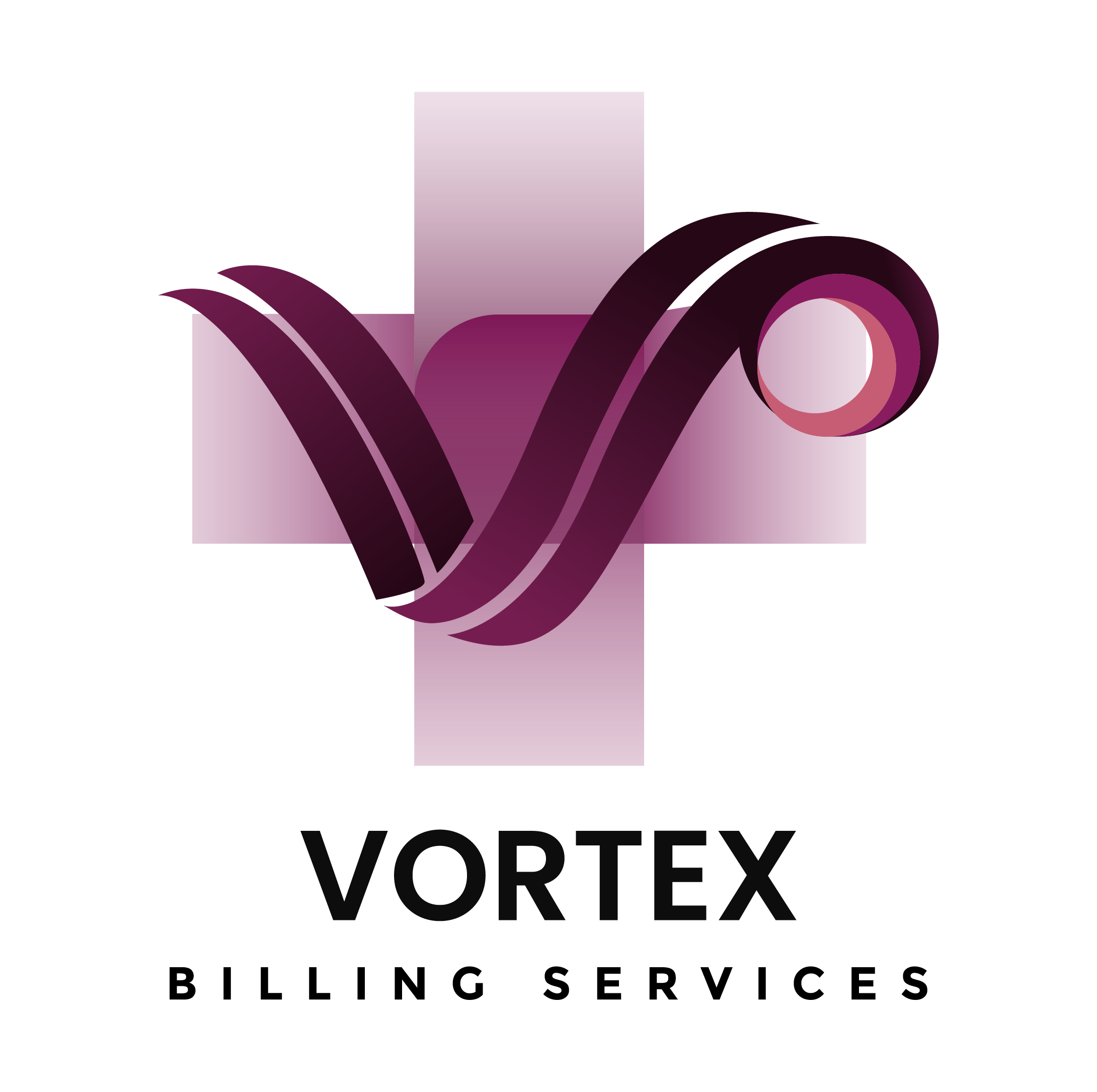Medical Billing vs. Revenue Cycle Management (RCM): What Does Your US Healthcare Practice Really Need?
When you’re trying to improve your healthcare practice’s financial health, you’ll often hear two terms thrown around a lot: Medical Billing and Revenue Cycle Management (RCM). While they sound similar, they serve different functions. So, which one does your practice actually need? If you’re based in the USA and are navigating the medical billing and RCM services market, the answer lies in understanding the unique goals, size, and infrastructure of your practice. Medical billing is just one piece of the revenue puzzle, while RCM is the bigger picture that ensures consistent cash flow, compliance, and efficiency.
Let’s dive deep and answer your question with real-world insights that help you make the right decision for your clinic or healthcare business.
Understanding the Basics
What is Medical Billing?
Medical billing is a fundamental administrative process that involves submitting and following up on claims with health insurance companies in order to receive payment for services rendered by a healthcare provider. This process starts after the patient visit and includes translating healthcare services into standardized codes, preparing insurance claims, submitting them, and managing patient invoices.
Medical billing is usually seen as the back-end process in healthcare revenue management. It’s focused strictly on billing, claim submissions, and collections. While crucial, it only scratches the surface of what a complete financial ecosystem needs to function efficiently.
For small clinics and new practices in the USA, especially those operating on tight budgets, medical billing might initially seem sufficient. It’s straightforward, relatively affordable, and gets the job done. However, the limitations become apparent when you start growing, dealing with multiple insurance providers, or facing complex compliance issues.
Key functions of medical billing include:
- Translating patient visits into standardized codes (CPT, ICD-10, etc.)
- Verifying patient insurance information
- Submitting insurance claims
- Posting payments and adjustments
- Handling denied or rejected claims
- Collecting balances from patients
Although effective, this narrow focus means a lot of upstream and downstream financial processes are often ignored, leading to missed revenue opportunities.
What is Revenue Cycle Management (RCM)?
Revenue Cycle Management (RCM) is a more comprehensive approach that starts from the very first patient interaction and extends all the way through to final payment collection. RCM covers everything from appointment scheduling, patient eligibility verification, and medical coding to claims management, denial handling, and analytics.
Think of RCM as the entire financial life cycle of a patient within your healthcare practice. Instead of just billing insurance companies, it optimizes every step—from front desk operations to back-end collections. It’s designed to enhance efficiency, reduce errors, and improve overall revenue performance.
For technology-driven practices and those aiming to scale or streamline operations, RCM offers unparalleled value. It helps practices comply with complex regulatory environments in the USA, which is critical for avoiding fines, audits, or denied claims.
Key components of RCM include:
- Patient scheduling and registration
- Insurance verification and authorization
- Medical coding and documentation
- Claims submission and management
- Payment posting and patient billing
- Performance reporting and analytics
- Denial management and appeals
The result? Fewer billing errors, faster reimbursements, better compliance, and ultimately, improved patient satisfaction.
Key Differences Between Medical Billing and RCM
Understanding the differences between medical billing and RCM is essential when deciding which fits best for your practice. While they both aim to get your practice paid, they differ significantly in scope, functionality, and long-term value.
| Feature | Medical Billing | Revenue Cycle Management |
| Scope | Limited to claim submission and payment | Covers the entire patient financial journey |
| Function | Focuses on billing and coding | Includes scheduling, coding, compliance, reporting |
| Technology | Often manual or basic software | Advanced platforms with automation and analytics |
| Compliance | Reactive to issues | Proactive and preventive compliance measures |
| Revenue Impact | Helps collect what’s owed | Maximizes revenue through optimization |
| Ideal for | Small or new practices | Growing or tech-savvy practices |
In essence, if you’re just getting started, medical billing might serve you well temporarily. But if your clinic wants to thrive, compete, and grow sustainably—especially in the complex healthcare environment of the USA—RCM is the smarter investment.
Importance of Choosing the Right Solution
Impact on Revenue Generation
Revenue is the lifeblood of any medical practice. Choosing between medical billing and RCM can significantly impact how much you earn—and how fast you get paid.
With basic medical billing, claims are submitted, but there’s little to no oversight into why certain claims get denied or how you can streamline future submissions. You might end up with money left on the table due to undercoding, poor documentation, or denied claims that never get followed up.
RCM, on the other hand, takes a proactive approach. It ensures that:
- Front desk staff collect accurate insurance information
- Eligibility is verified before service
- Coding is done correctly and compliantly
- Denials are analyzed and appealed if necessary
- You get detailed reports showing revenue trends, payer behavior, and more
The result? Faster reimbursements, fewer errors, and a predictable cash flow.
For practices in the USA, where payer rules vary and regulations are ever-changing, having a full RCM solution ensures you’re always a step ahead.
Importance of Compliance and Accuracy
In today’s healthcare landscape, non-compliance can be costly. HIPAA violations, coding errors, and fraudulent claims can result in hefty fines and reputational damage. That’s why accuracy and compliance aren’t just “nice-to-haves”—they’re mission-critical.
While medical billing can handle coding and submissions, it lacks the broader compliance oversight that RCM provides. With RCM, you’re not only ensuring accurate coding and documentation but also staying aligned with ever-evolving CMS guidelines, payer rules, and audit requirements.
For example, RCM platforms often come with built-in compliance checks, regular training modules, and automated alerts for missing information—things you just don’t get with basic medical billing.
The Role of Technology in Billing and RCM
Technology is no longer optional in medical billing or RCM—it’s a necessity. Whether it’s cloud-based platforms, AI-driven denial management, or automated reminders for patients, tech-driven solutions can drastically reduce manual errors and improve speed.
Medical billing systems might use simple tools for claim generation and tracking. However, RCM platforms are typically integrated with Electronic Health Records (EHRs), offer real-time analytics dashboards, predictive insights, and secure communication channels.
Top features of RCM technology include:
- AI-powered coding suggestions
- Automated insurance verification
- Dashboard-based analytics
- Real-time claim status updates
- Secure patient portals for payments
If your practice in the USA wants to compete in a fast-paced, tech-forward environment, embracing RCM technologies will give you the edge.
Deep Dive into Medical Billing
Core Components of Medical Billing
At its core, medical billing revolves around a structured workflow that ensures healthcare providers get reimbursed for their services. Though it sounds straightforward, it involves multiple layers of detail, documentation, and diligence to work effectively in the complex U.S. healthcare system.
Let’s break down the primary components:
- Patient Information Capture
The billing cycle begins with the accurate capture of patient demographics and insurance details. This includes name, address, insurance provider, policy number, and more. - Insurance Verification
One of the most critical steps, this confirms the patient’s insurance coverage, eligibility, and the specifics of what their plan covers. - Medical Coding
Services provided during the visit must be translated into standardized codes (ICD-10, CPT, HCPCS). These codes communicate diagnoses and treatments to the insurer for processing. - Claim Generation and Submission
The claim is then generated using a billing software system and submitted electronically (or sometimes manually) to the insurance company. - Claim Management
This includes tracking the claim, responding to payer inquiries, fixing rejections, and managing denials. - Payment Posting and Patient Invoicing
Once the payer processes the claim, payments or denials are posted, and patient statements are generated if there’s a remaining balance.
Each of these steps, though technical, can be streamlined using advanced software and trained staff. However, if any of these elements are mishandled, revenue leaks can occur, leading to lower profitability.
Advantages of Traditional Medical Billing
Medical billing on its own, especially when done correctly, offers several compelling advantages, particularly for smaller practices or clinics just starting out in the USA.
- Cost-Effective for Small Operations:
Medical billing services are generally more affordable than a full-scale RCM system. For practices that handle a modest volume of patients, the ROI may be higher in the short term. - Easier to Implement:
With fewer moving parts, traditional billing systems are simpler to deploy. There’s less training, a lower learning curve, and minimal tech infrastructure needed. - Good for Straightforward Billing Scenarios:
If your practice provides standard services and works with a limited number of insurance companies, the basic billing process is usually sufficient. - Outsourcing Flexibility:
Many third-party companies in the USA offer reliable, transparent, and efficient medical billing services that can be tailored to your specific needs without the complexity of RCM.
Despite these advantages, medical billing isn’t a one-size-fits-all solution. It has real limitations, especially in dynamic, fast-paced healthcare environments.
Limitations of Medical Billing Alone
As your practice grows or begins dealing with more complex insurance situations, the weaknesses of standalone medical billing become evident. Here are some of the primary challenges:
- No Front-End Support:
Basic billing doesn’t cover patient scheduling, eligibility checks, or authorization tasks. If these aren’t managed correctly, claims are at higher risk of denial. - Limited Compliance Oversight:
Medical billing teams may not always be up to date with changing compliance laws, putting your practice at risk of HIPAA violations or claim denials due to regulatory errors. - Minimal Analytics and Reporting:
Traditional systems don’t offer in-depth performance metrics. You may not know where money is being lost or how efficiently your billing system is operating. - Reactive Rather than Proactive:
Medical billing addresses issues after they occur (e.g., rejections, denials), rather than preventing them proactively like RCM solutions do.
In essence, if your healthcare facility in the USA is expanding or you want to future-proof your operations, relying on medical billing alone could leave you vulnerable.
Deep Dive into Revenue Cycle Management
Lifecycle of Revenue Cycle Management
The RCM lifecycle encompasses every financial interaction a patient has with your practice, starting from when they first book an appointment to when their final payment is processed. This end-to-end system brings together clinical and administrative data to streamline every aspect of the billing and reimbursement process.
Here’s what the RCM lifecycle typically looks like:
- Patient Scheduling & Registration:
Begins with gathering demographic and insurance data before the patient even walks in the door. - Insurance Eligibility & Preauthorization:
Confirms coverage and obtains required pre-approvals from insurance providers—key for reducing claim denials. - Medical Documentation & Coding:
Involves physicians and coders working together to ensure services are properly documented and coded. - Charge Capture & Claim Submission:
Once services are rendered, charges are captured accurately, and claims are submitted promptly to the payer. - Remittance Processing:
Payments from insurers are posted, and discrepancies are resolved through denial management procedures. - Patient Collections:
Remaining balances are billed to the patient. Modern RCM systems often offer online payment portals, text reminders, and payment plans. - Reporting & Performance Analytics:
One of RCM’s strongest features—ongoing, real-time insights into revenue cycle performance, denial trends, and process improvement areas.
This lifecycle ensures your practice doesn’t just get paid—it gets paid on time, accurately, and with fewer losses.
Benefits of Implementing RCM in Your Practice
Implementing a robust RCM solution can revolutionize your practice’s financial operations. Here’s how:
- Increased Revenue Capture:
By optimizing front-end processes like eligibility checks and coding, RCM drastically reduces claim denials and lost revenue. - Better Cash Flow:
With automation and faster claim resolution, funds arrive in your account quicker, giving your practice stronger cash reserves. - Compliance and Risk Management:
RCM systems often come with built-in regulatory frameworks, helping you stay compliant with HIPAA, CMS guidelines, and payer-specific rules. - Improved Patient Experience:
By providing transparent billing, easy-to-understand statements, and multiple payment options, patients feel more in control and are more likely to pay on time. - Operational Efficiency:
Staff spend less time fixing errors and more time focusing on patient care. Automation reduces manual entry, which cuts down on errors and burnout.
For practices in the USA aiming for scalability and long-term sustainability, RCM isn’t just a luxury—it’s a necessity.
Challenges and Considerations with RCM
Despite its many advantages, RCM isn’t without challenges. Before jumping in, it’s important to weigh the considerations:
- Higher Upfront Cost:
RCM systems and services often come at a premium, especially if integrating with your EHR or customizing workflows. - Complex Implementation:
RCM involves multiple stakeholders, software systems, and workflow changes. Transitioning from medical billing to RCM can take weeks or months. - Training Requirements:
Staff will need to be trained on new systems and compliance procedures, which can temporarily disrupt operations. - Vendor Dependency:
Choosing the wrong RCM vendor can lead to long-term headaches. It’s critical to partner with a provider that understands your specialty, payer mix, and goals.
That said, many U.S.-based RCM service providers offer turnkey solutions with cloud-based platforms, dedicated account managers, and 24/7 support to help practices of all sizes overcome these challenges smoothly.
Deciding What’s Best for Your Practice
Identifying Your Practice Needs
Choosing between medical billing and RCM isn’t about which service is objectively better—it’s about which one aligns with your practice’s unique needs. Every healthcare provider has a different setup, workflow, and growth trajectory, and understanding these variables is essential before making a choice.
Start by evaluating:
- Practice Size and Patient Volume
Small, single-provider clinics with a manageable patient load might find traditional medical billing sufficient. On the other hand, medium to large practices, especially those with multiple locations, will benefit significantly from the holistic nature of RCM. - Specialties and Service Complexity
If your practice handles complex treatments or frequently deals with prior authorizations (e.g., cardiology, oncology, orthopedics), you’ll need the comprehensive oversight that RCM provides. - Payer Mix and Insurance Complexity
The more insurance plans you deal with—private, Medicare, Medicaid—the greater your need for advanced tracking, analytics, and compliance features built into RCM systems. - Current Challenges
Are you seeing delayed reimbursements, frequent claim denials, or compliance flags? These are telltale signs that your current billing setup is inadequate and you may need to upgrade to an RCM solution.
By identifying these internal factors, you’ll be better positioned to choose the solution that not only solves your immediate problems but also prepares you for future growth.
Budget and Cost-Effectiveness
Cost is often the deal-breaker, especially for new or expanding practices in the USA. However, when evaluating medical billing versus RCM, the conversation should be about value rather than just cost.
Here’s a breakdown to help you compare:
| Feature | Medical Billing | RCM |
| Monthly Fees | Lower (usually fixed or percentage-based) | Higher (due to advanced tools and services) |
| Setup Time | Shorter | Longer |
| Training Required | Minimal | Extensive |
| ROI Timeline | Short-term | Long-term gains |
| Revenue Recovery | Basic | Maximized via denial management, analytics |
Many RCM providers in the U.S. now offer tiered pricing, allowing smaller clinics to adopt partial RCM functionality without committing to full-scale packages. This hybrid approach allows for cost-effective scaling and enables practices to grow into a more advanced solution over time.
In short, don’t just ask, “Can we afford RCM?” Ask, “Can we afford not to?”
Scalability and Growth Opportunities
If your long-term vision includes growth—more patients, more providers, more locations—you need a system that will grow with you. Medical billing systems are often limited in this respect. As your patient volume and administrative load increase, the cracks in the system begin to show.
RCM solutions, particularly those driven by technology and automation, offer excellent scalability:
- Cloud-Based Access: Manage billing operations across multiple locations.
- Advanced Reporting: Track KPIs across departments and geographies.
- Modular Tools: Add services like telehealth billing, credentialing, or compliance audits as you expand.
- Automation: Minimize the need to hire and train new staff by automating repetitive tasks.
Practices that invest in scalable RCM systems can maintain consistent revenue performance even during periods of rapid growth or change, such as adopting new technologies or entering new markets.
Industry Trends and Innovations
Shift Towards Automation and AI
The U.S. healthcare billing landscape is rapidly embracing automation and artificial intelligence (AI) to improve speed, accuracy, and compliance. If your current medical billing system relies heavily on manual processes, you’re already behind.
Key automation trends include:
- Predictive Denial Management: AI can predict which claims are likely to be denied and flag them before submission.
- Automated Prior Authorizations: Save time and reduce friction with automated payer checks.
- AI-Powered Coding Assistants: Reduce human errors in code selection with intelligent coding tools.
In contrast, RCM platforms are at the forefront of adopting these innovations. If you want to keep pace with future industry standards, investing in an AI-enhanced RCM solution is a forward-thinking choice.
Integrating EHR and Billing Systems
One major trend among healthcare providers in the USA is the integration of Electronic Health Records (EHR) with billing platforms. This combination eliminates data silos, ensures better accuracy, and improves provider-patient interactions.
Benefits of integration include:
- Fewer Errors: Reduces discrepancies between clinical and billing data.
- Faster Workflows: Automatically transfers documentation to billing platforms.
- Better Patient Experience: Patients receive more accurate and timely bills, reducing confusion and improving satisfaction.
Most modern RCM systems offer EHR integrations out of the box, whereas many standalone medical billing systems may require custom setups or third-party tools.
Future of Medical Billing and RCM in the USA
The future is digital, data-driven, and patient-centered. Over the next few years, we’ll see:
- Increased Regulatory Oversight: Practices will need tools that keep them compliant in real time.
- Consumer-Like Payment Experiences: Patients will expect convenience—mobile payments, transparency, and flexible payment plans.
- Data Analytics for Decision Making: Revenue insights will become essential for planning and budgeting.
If your practice wants to remain competitive, it’s not just about adopting RCM—it’s about adopting smart, tech-enabled RCM tailored for U.S. healthcare dynamics.
Partnering with the Right Service Provider
What to Look for in a Medical Billing Company
Choosing the right medical billing company is just as important as choosing between medical billing and RCM. The market in the USA is full of options, but not all providers offer the same level of quality, transparency, or service.
Here are some key traits to look for:
- Experience in Your Specialty:
Billing requirements for mental health, orthopedics, or cardiology can differ dramatically. Choose a vendor with experience in your area. - Transparent Pricing:
Look for straightforward, no-hidden-fees pricing structures. Many providers work on a percentage of collections—make sure this is fair and justified. - Compliance & Security Standards:
Ensure the company is HIPAA-compliant and uses secure, encrypted platforms to handle sensitive patient data. - Customer Support:
A responsive, knowledgeable support team is a must. You don’t want to be left on hold when there’s a revenue crisis. - Software Integration:
Your billing partner should integrate easily with your current EHR, PM, or practice management software. - Performance Metrics:
Top billing companies will provide detailed reports and dashboards so you can track claim acceptance rates, denial trends, and revenue flow.
A good billing company should feel like an extension of your in-house team—aligned with your mission and committed to your success.
Evaluating RCM Vendors
Evaluating an RCM vendor requires a more comprehensive assessment since you’re entrusting them with almost your entire financial operations. Here’s a smart checklist for choosing the right one in the U.S. market:
- End-to-End Services:
Do they offer services beyond billing—such as credentialing, authorization, coding, and compliance audits? - Technology Capabilities:
Are their systems cloud-based? Do they offer real-time analytics, patient portals, AI-driven tools? - Customization:
Can they adapt their workflow to match your internal processes, or do they force you to change how you operate? - Onboarding Process:
A detailed transition plan is essential. Your vendor should help with data migration, staff training, and go-live support. - References and Case Studies:
Don’t just take their word—ask for real examples and contact references to confirm performance. - Scalability:
Will they be able to support your growth in terms of volume, specialties, or multiple locations?
RCM partnerships are long-term. A misalignment here can cripple your finances, while the right partner can take your practice to new heights.
Questions to Ask Before Signing a Contract
Before signing any contract with a billing or RCM provider, ask these questions to avoid unpleasant surprises:
- What is your average claim acceptance rate?
Industry average is about 95%, but great vendors hit 98% or more. - How do you handle denials and appeals?
Ask about their denial management process and how quickly they follow up. - Can we scale services up or down as needed?
Flexibility is key for adapting to seasonal shifts or growth phases. - Who owns the data and software?
Ensure you retain full ownership of your patient and financial data. - How do you ensure compliance with U.S. regulations?
Their compliance strategy should be proactive, with regular audits and updates.
Don’t be afraid to dig deep—it’s your money, your practice, and your future on the line.
Real-World Scenarios and Case Studies
Case Study: Small Clinic Transitions from Billing to RCM
A family practice clinic in rural Texas was struggling with slow reimbursements and high claim rejection rates. With only one front-office admin handling everything, the billing process was chaotic and error-prone.
The Challenge:
- 70% first-pass claim acceptance
- Delayed patient payments
- High workload on limited staff
The Solution:
They transitioned to an outsourced RCM provider offering scheduling, pre-auths, coding, billing, and collections—all from a cloud platform.
The Outcome:
- First-pass claim rate rose to 97%
- Reimbursement cycle shortened by 14 days
- Front-office staff refocused on patient engagement
This shows how even a small practice can benefit significantly from RCM when traditional medical billing becomes a bottleneck.
How a Large Practice Benefitted from RCM Integration
An orthopedic group with five locations in California faced growing pains: increasing patient volumes, multiple insurance contracts, and inconsistent billing outcomes.
The Challenge:
- Fragmented billing across locations
- Lack of visibility into performance metrics
- Growing compliance concerns
The Solution:
They implemented an enterprise-grade RCM platform integrated with their EHR. The solution automated eligibility verification, authorization workflows, and analytics dashboards.
The Outcome:
- Revenue increased by 18% in one year
- Compliance audit risks dropped by 40%
- Staff productivity improved with task automation
RCM empowered the practice to scale confidently, demonstrating that bigger organizations need equally robust systems to succeed in the complex U.S. healthcare environment.
Conclusion
When comparing RCM vs. medical billing, it all boils down to one question: What does your practice need to thrive—not just survive?
If you’re a small practice with limited services and want a cost-effective solution for claim submission, traditional medical billing might be all you need right now. But if your clinic is growing, you’re facing frequent denials, dealing with complex payers, or aiming for better cash flow and compliance, RCM is the future.
In a competitive and tightly regulated healthcare landscape like the USA’s, settling for the bare minimum may not be enough. Revenue Cycle Management ensures that every step of your practice’s financial journey is optimized—from the front desk to the final dollar in your bank account.
So, does your practice just need billing—or does it need a smarter, more integrated approach to keep pace and scale?



